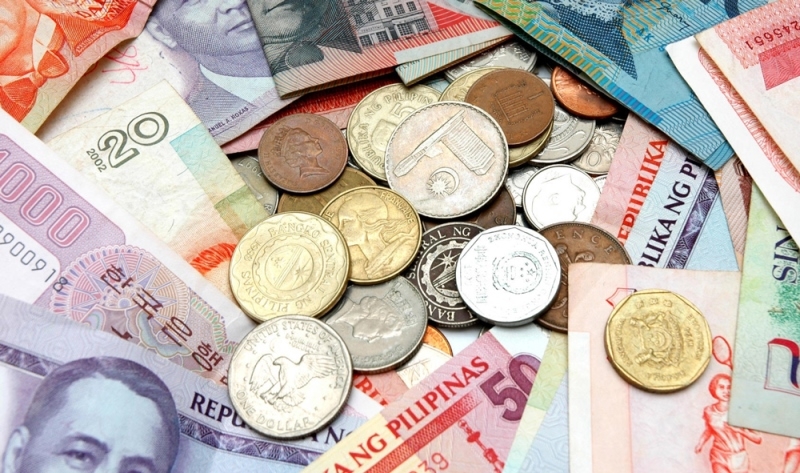
Economic development derives from the combination of capital, labour and the efficient use of these resources. The more capital and labour, and the more efficiently they are applied, the more economic output is derived. In simple terms, economic growth springs from the accumulation of physical and human capital (labour) and advances in production technology — total factor productivity.
Research in much of the last decades of the 20th century on the rapid growth of many developing countries points to their increased capital accumulation, labour skills and their managerial competencies. These have developed extremely fast while others have sank.
The Asian Tiger nations, most of which were ex-colonies like Ghana and Nigeria, have over the last 30 years got their act together and attracted much foreign direct investment (FDI), raising their human development indices and life-expectancies significantly relative to those of AICs while in most of sub-Saharan Africa these have declined abysmally. Lack of capital and skilled labour, incessant corruption and managerial incompetence have all combined to make the ‘Dark Continent’ even darker after independence.
The 1980s ushered in a period of increased global integration. The global integration of markets, spurred by increased economic liberalisation, rapid innovation in financial instruments and information and communication technologies — described aptly as globalisation — has led to a dramatic resurgence of private capital flows, referred to as foreign direct investment, FDI, which accelerated in the late 1990s.
According to the International Monetary Fund, foreign direct investment refers to “an investment made to acquire lasting or long-term interest in enterprises operating outside of the investor’s economy”. FDI is a major source of external finance, which means that countries with limited amounts of capital can receive finance beyond national borders from resource-rich countries.
The rise of FDI has been truly spectacular between 1982 and 2001. In 1982, total global FDI flow was a mere US$52bn. By 1990 this had risen to about US$200bn, and in ten years it reached a remarkable US$1,271billion. These represented annual growth rates of 24, 20 and 40 percent between 1986-90, 1991-95 and 1996-2000 respectively.
In general, companies go international for many reasons apart from the obvious profit motive. These include:
Resources — raw materials, cheap energy, low-cost labour
Enhanced productive efficiency — the location of a factory to achieve an efficient, globally-integrated production process in order to achieve improved competitiveness.
Markets — in order to serve local markets efficiently, MNEs tend to locate facilities in such countries. The decision to locate in a particular market is a function of three variables, namely: market size, degree of market protection, and production and distribution economics.
Export platforms — MNEs may locate in a particular country mainly to
use it as a base for exporting its goods: although it may not have any innate comparative advantages, it may have created some by granting generous fiscal and other incentives.
FDI has become an important source of private external finance, especially to developing countries. But more than that, FDI is also good for the unique combination of factors that it can provide. Not only can FDI add to investible domestic funds and capital formation, it is also a means of transferring production technology, innovative capacity and organisational and managerial practices between locations. Given its potential role in accelerating growth and economic transformation, there is fierce competition among developing countries in attracting it.
While the first to benefit is the foreign investor, their assets can also be transferred to domestic firms and the wider economies of host countries — if a conducive environment exists. The greater the supply and distribution links between foreign subsidiaries and domestic firms, and the stronger the capabilities of domestic firms to capture spill-overs from the presence of — and competition from — such foreign firms, the more likely that FDI will enhance productivity and competitiveness.
To take advantage of the benefits of capital accumulation, most successful developing countries like Singapore, Malaysia, Thailand, Hong Kong, India and China have sustained inflows of capital. The cases of China and India stand clear. Under previous regimes that espoused autocratic policies, these countries wallowed in poverty.
India’s policy of isolationism after independence meant that for the first 40 years capital inflows (inward FDI) were severely restricted, although internal capital formation was hardly adequate. The result was that India grew very slowly indeed, at an average rate of 1.0 per capita per year — which became known around the world and the Hindu rate of growth. Since then Prime Minister Narasihma Rao and his finance minister Manmohan Sing opened India to sweeping reforms in 1991: India has become an economic superpower.
Why has FDI flowed to such countries, and helped shape progress while much of Africa gets little or nothing? Much has been written about this subject and I can only rehash a few points. The successful countries saw the need to enhance the skills of their workforce. In the 1990s, in per head terms, there were more 18-24 year olds in universities in Singapore, Malaysia, Thailand and Hong Kong than in Italy, France and the UK. Other policies comprised elements of good governance, including:
Rule of law
Transparency
Responsiveness and accountability
Strategic vision
Transparency meant that it was clear in advance what external investors were getting themselves into. In much of Africa, so much personal greed and corruption means that people in authority demand bribes in advance of facilitating inward investment by external investors, although such people in those jobs are paid to offer honest service to their countries.
Many a time an official insists that an investor pays a substantial bribe before the green light to proceed is given.
All business entails risk, and if an investor must spend part of his capital paying a bribe — especially if this is substantial — apart from the moral bankruptcy that this entails, how can he guarantee that that cost of the ultimate business will not make him uncompetitive and in consequence fail? The result is that our economies get starved of much-needed inward investment, which apart from capital accumulation helps with a nation’s balance of payments.
In today’s globalising world, where the incredible advances in communication technology have rendered the notion of time and space virtually irrelevant and obsolete, capital flows tend to go to places which are conducive for business. Such conducive environments are not God-given; they are created by people who happen to be in positions of leadership or authority, people to whom the term ‘leader is supposed to apply.
Economic development is not due to good fortune, chance or magic. It is fashioned by strategic leaders, those with the ability to: 1) anticipate, prepare and get a nation positioned for the future; 2) mobilise and focus resources and energy on things that make a difference; and 3) think ahead, anticipate and envision the future, and be able to navigate an organisation or a country through the challenges of a fast-changing, globalising world. Such leaders are able to envision a better future, develop strategies to match, and align people behind them to achieve national development.
Author: Dr. Pikay Richardson, BSc (Eng), MSc, PhD. Visiting Senior Fellow (PMO Division) Manchester Business School University of Manchester Booth Street West Manchester M15 6PB United Kingdom Tel: +44(0)7727 065 418; +44(0)7721 383 826









